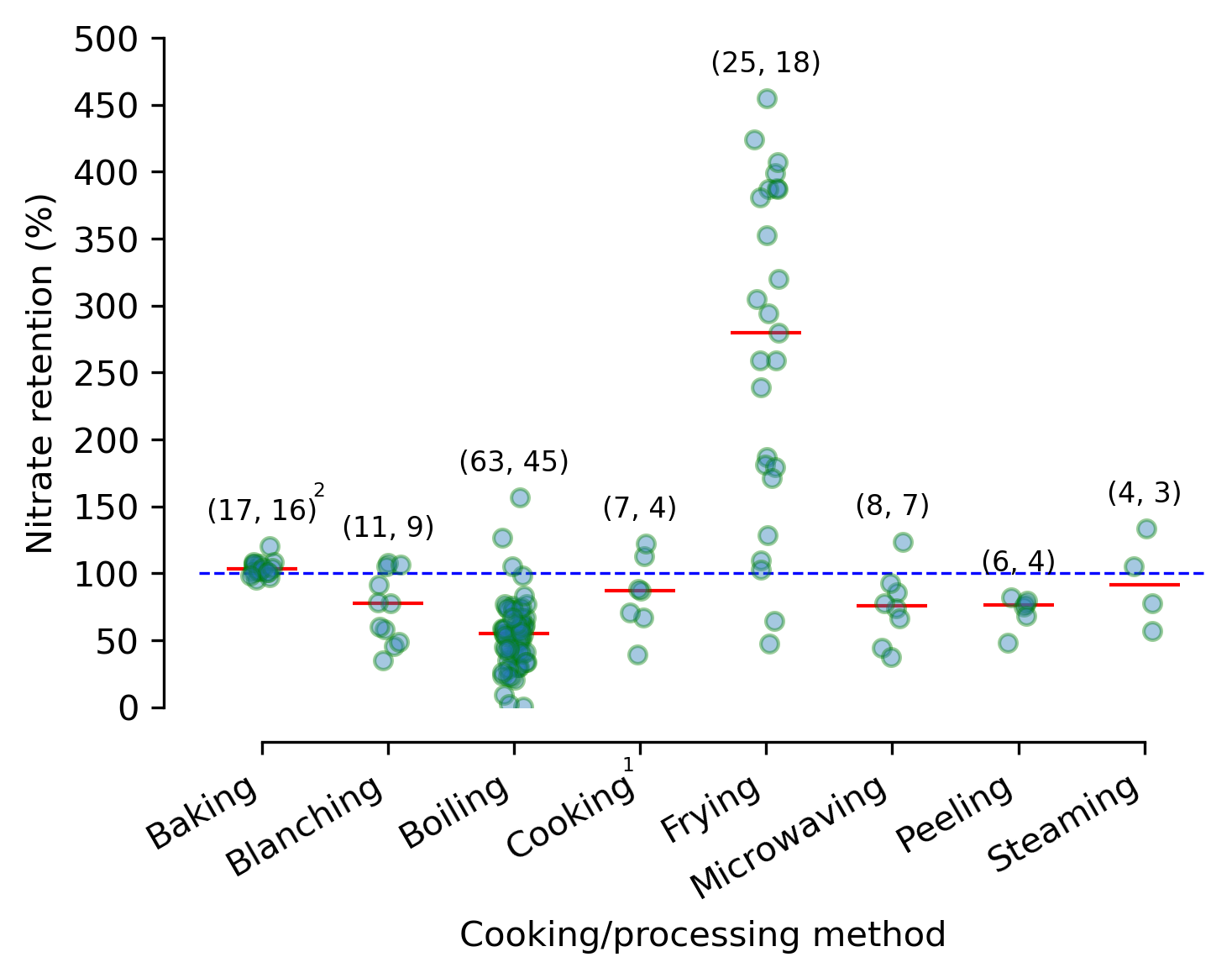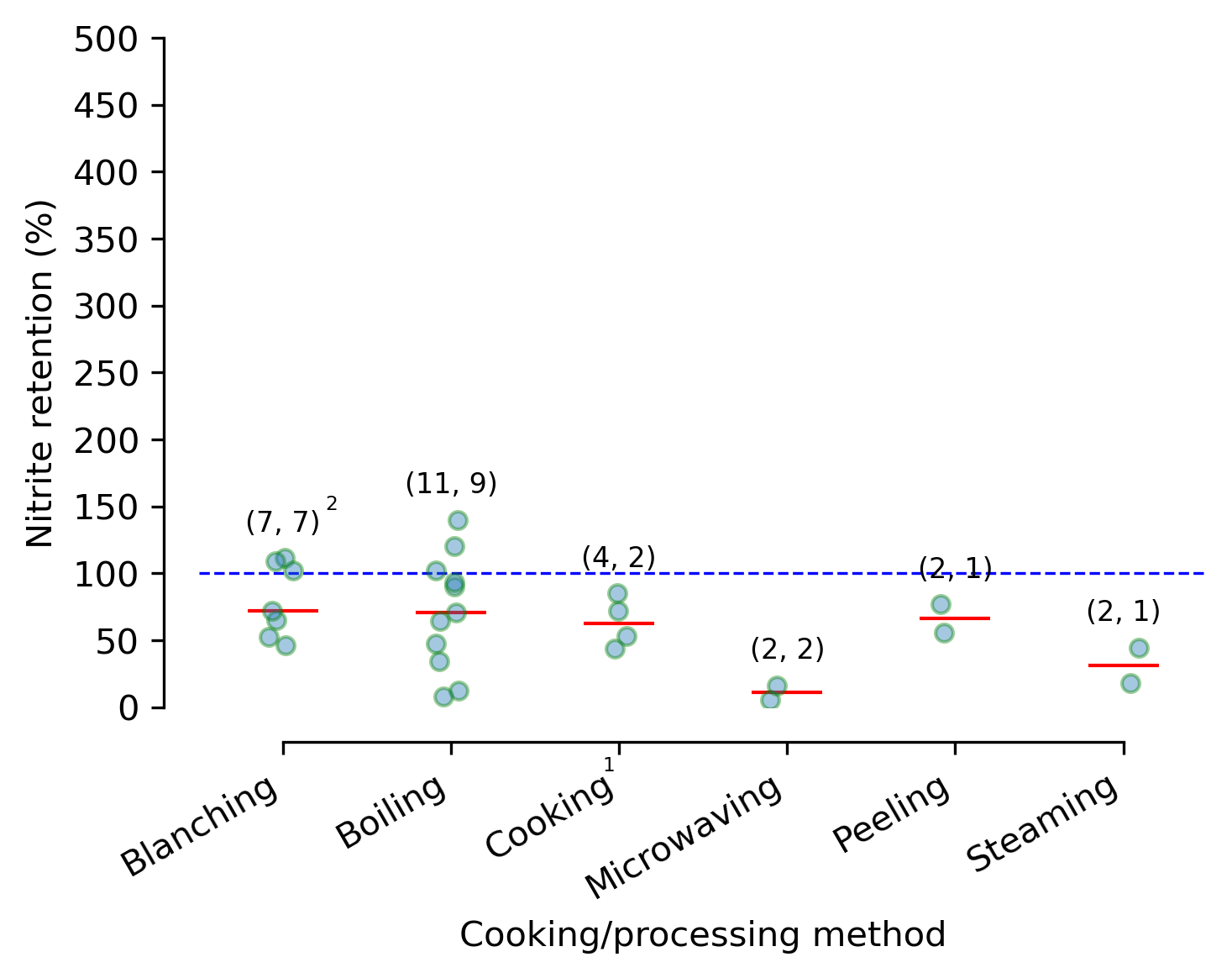Data Mining using Nitr-Navigator
The Nitr-Navigator contains a wide range of related data fields, such as cooking methods and the year of sampling, which facilitates diverse data filtering processes. It can facilitate the differentiation of source-specific nitrate/nitrite intake assessments
Key Research Questions
This study addresses 3 key questions relevant to the application of our database in clinical and epidemiological studies:
- (1) How do growing seasons influence nitrate and nitrite levels in plant-based foods?
- (2) What are the potential impacts of different cooking methods on nitrate and nitrite retention?
- (3) How has the nitrate and nitrite content of foods changed over the past 30 years?
Seasonal Variations in Nitrate Content
Key Seasonal Insights
- Leafy vegetables show strong seasonality: higher in winter, lower in summer.
- Root vegetables remain relatively stable with no clear seasonal pattern.
A noticeable pattern emerged, revealing that nitrate contents of vegetables sampled during warm months, particularly June and July, were consistently lower than those in the cold season for leafy vegetables but not for root vegetables.
Impacts of Cooking Methods on Nitrate and Nitrite Retention


Boiling
Substantial nitrate loss due to leaching into cooking water (median ~55%).
Steaming
Better preserves nitrate with minimal loss compared to boiling.
Frying
Highly variable; some foods exceed 100% due to water loss.
Nitrate retention (%) in boiled vegetables (median [IQR], 55.00 [39.59–65.56] %; n = 63) consistently fell below 100%. By contrast, frying often increased apparent nitrate levels (median [IQR], 279.53 [179.53–386.89] %; n = 25). Steaming and baking generally preserved more nitrate, while blanching (median [IQR], 77.78 [53.33–98.35] %) showed moderate retention.
Decadal Changes in Nitrate Content
Highlights (1990–2020)
- Kale and romaine lettuce saw the steepest declines in nitrate levels.
- Chinese white cabbage remains one of the richest sources, despite some fluctuations.
- Spinach shows moderate decline but continues to rank among nitrate-dense vegetables.
- Overall, many leafy greens show a downward trend, suggesting shifts in agricultural practices and cultivars.
Cite this page
Zhong, L., Hodgson, J. M., Lewis, J. R., Blekkenhorst, L. C., Bondonno, N. P., Sim, M., Woodman, R. J., & Bondonno, C. P. (2025). Nitrate and nitrite food composition database: An update and extensive deep dive. The American Journal of Clinical Nutrition, 121(5), 1124-1136. https://doi.org/10.1016/j.ajcnut.2025.01.031